Books &Mary Blair 10 Apr 2007 08:12 am
Animation History Books
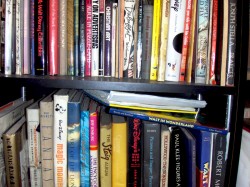 – In a letter from a friend, I was asked to recommend some animation books. That’s always a hard thing to do. Hard because I like things about books that aren’t necessarily things others like or are searching for. Hard because reading, to me, is such an individual preference that I know my likes aren’t going to please most others. And hard because so many books are written by friends whose work I admire – making me feel guilty (for no good reason) for recommending them – as if it were a bias on my part just because they’re friends. It’s particularly hard these days because there are so many good books coming out every day, and there are just too many books to point out. For that reason, I’m going to talk primarily about books I love – regardless of their availability.
– In a letter from a friend, I was asked to recommend some animation books. That’s always a hard thing to do. Hard because I like things about books that aren’t necessarily things others like or are searching for. Hard because reading, to me, is such an individual preference that I know my likes aren’t going to please most others. And hard because so many books are written by friends whose work I admire – making me feel guilty (for no good reason) for recommending them – as if it were a bias on my part just because they’re friends. It’s particularly hard these days because there are so many good books coming out every day, and there are just too many books to point out. For that reason, I’m going to talk primarily about books I love – regardless of their availability.
Saying all that, I also have to say that I’ve been thinking about such a post (or two) for a while, and I didn’t need too much encouragement. I love books. My studio is overrun with them; my apartment is overrun with them. Bookshelves are overstuffed, floors have piles on top of piles. I spent many years as a child in libraries going through art, animation and illustration books, lusting after so many of them. When I grew old enough to afford any, I started buying. So these are some of the books I love.
My all time favorite animation books include two impossible to get
classics:
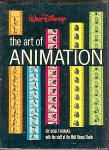 Bob Thomas‘ The Art of Animation. I’m only talking about the 1959 version, the one that promotes Sleeping Beauty, not the reworked versions they did for later features. I think I favor this book so much because it was the first big-deal animation book I ever owned (and read till the book just about fell apart.) The book gives a good overview of animation’s processes and methods and gives a sense of history to the subject. I learned so much from this book that I can’t properly evaluate it. I also may have read a lot inbetween the lines, but I got a lot out of it. Unfortunately, this book is out of print and is hard to find though I recently bought another copy of this book on ebay.
Bob Thomas‘ The Art of Animation. I’m only talking about the 1959 version, the one that promotes Sleeping Beauty, not the reworked versions they did for later features. I think I favor this book so much because it was the first big-deal animation book I ever owned (and read till the book just about fell apart.) The book gives a good overview of animation’s processes and methods and gives a sense of history to the subject. I learned so much from this book that I can’t properly evaluate it. I also may have read a lot inbetween the lines, but I got a lot out of it. Unfortunately, this book is out of print and is hard to find though I recently bought another copy of this book on ebay.
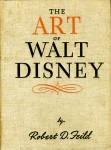 Robert Feild’s The Art of Walt Disney was an historical oddity that my local library had when I was young. It was published in the arly 40s and illustrates, in a somewhat formal way, the art of Disney’s early classic features. No artists are identified, no credit is given to anyone other than Disney.
Robert Feild’s The Art of Walt Disney was an historical oddity that my local library had when I was young. It was published in the arly 40s and illustrates, in a somewhat formal way, the art of Disney’s early classic features. No artists are identified, no credit is given to anyone other than Disney.
However, the book was so much a part of my childhood that I cherished it and was so proud when I finally was able to afford a rare copy I found at a used book seller back in the 60s. Elelments of animation that didn’t appear in the Thomas book were here: real art direction roughs, real animation roughs. Oddly both books feature sections on storyboards that were eliminated. I love them both.
Now to books that are more readily available – especially on-line – that I relish more for the material within than the nostalgia factor. However, just as I was significantly influenced by the above two books, I suspect the following are affecting new generations of animators:
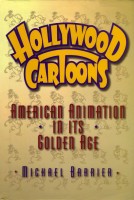 Mike Barrier‘s Hollywood Cartoons: American Animation in Its Golden Age is for animation fans as well as history buffs. Barrier is an articulate, knowledgeable, well-researched author who puts everything he has into his writing. He backs up his research with a monstrous collection of interviews with all the greats he writes about. His books aren’t big coffeetable tomes stuffed with great images; he writes about artists, animators and studios in a sophisticated way unearthing bits of history that add up to a sharp and dynamic picture of everyone or every film he focuses on.
Mike Barrier‘s Hollywood Cartoons: American Animation in Its Golden Age is for animation fans as well as history buffs. Barrier is an articulate, knowledgeable, well-researched author who puts everything he has into his writing. He backs up his research with a monstrous collection of interviews with all the greats he writes about. His books aren’t big coffeetable tomes stuffed with great images; he writes about artists, animators and studios in a sophisticated way unearthing bits of history that add up to a sharp and dynamic picture of everyone or every film he focuses on.
In a year, when I was despondent over the state of animation – particularly the work going (or not going) through my studio, this book is the only thing that kept me inspired and hopeful about animation and its possibilities. But that’s a very personal thing, and I make no bones about it. I’ve reread this book sevaral times and will do again. There’s just so much in it. 
Michael Barrier has also just seen his new book, The Animated Man, A Life of Walt Disney, released. I won’t review it here since I’ve just started reading it, but I’m totally hooked only fifty pages into it. I didn’t like the recent biography by Neal Gabler (I couldn’t get through it), but this is totally engrossing. I’ve read Disney’s life story what seems a million times over, so I’m amazed at how captivated I am.
When I’ve finished reading I’ll have more to say about it, but don’t wait for me. If you like Disney, like accurate history, like animation and want a good read, buy it.
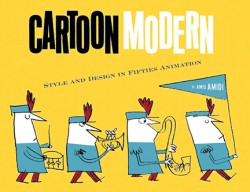 Amid Amidi has contributed a completely original title to the compendium of animation history with his book, Cartoon Modern: Style and Design in 1950s Animation. This is one of the finest art books with a focus on animation. It’s a treasure of glorious illustrations of hard to find films (never mind the actual artwork from the films) from the 50s and early 60s, with the analysis on the design in the films. Since these films were more about their design than their animation, this makes perfect sense. The organization within the book is a bit peculiar, but that’s expected given the numerous designers and studios involved. It’s become one of my treasures since its publication last year.
Amid Amidi has contributed a completely original title to the compendium of animation history with his book, Cartoon Modern: Style and Design in 1950s Animation. This is one of the finest art books with a focus on animation. It’s a treasure of glorious illustrations of hard to find films (never mind the actual artwork from the films) from the 50s and early 60s, with the analysis on the design in the films. Since these films were more about their design than their animation, this makes perfect sense. The organization within the book is a bit peculiar, but that’s expected given the numerous designers and studios involved. It’s become one of my treasures since its publication last year.
Animation inspires heavy duty coffee table books. John Canemaker is the king of beautiful books filled with excellent artwork telling the stories about the world of animation. John’s books are the closest to the classics I found as a child, the Thomas and Feild books, and I can only guess at how many kids were turned onto animation because of his writing.
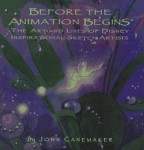 His Disney classics include: Walt Disney’s Nine Old Men (the story of the nine principal animators that Disney liked to focus on during the 50′s) and Paper Dreams: The Art and Artists of Disney Storyboards and The Art and Flair of Mary Blair (a focus on one specific Disney designer.) These are all filled with choice illustrations that are hard to find elsewhere (even on the internet) and lots of specific information that is informed and key to the history of Disney’s greatest films. My particular favorite among the books is relative to my specific interest in animation: design. The book, Before The Animation Begins, tells the story of Disney’s inspirational art directors and designers. It’s a beauty; well conceived, written, and designed.
His Disney classics include: Walt Disney’s Nine Old Men (the story of the nine principal animators that Disney liked to focus on during the 50′s) and Paper Dreams: The Art and Artists of Disney Storyboards and The Art and Flair of Mary Blair (a focus on one specific Disney designer.) These are all filled with choice illustrations that are hard to find elsewhere (even on the internet) and lots of specific information that is informed and key to the history of Disney’s greatest films. My particular favorite among the books is relative to my specific interest in animation: design. The book, Before The Animation Begins, tells the story of Disney’s inspirational art directors and designers. It’s a beauty; well conceived, written, and designed.
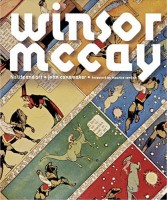 John Canemaker has non-Disney books as well. Two of them classic treasures among animation books. Winsor McCay : His Life and Art is the only significant book to put such a fine-tuned focus on animation’s first, great artist. There’s a wealth of material in this book with stunningly valuable illustrations. McCay deserved nothing less than the brilliance he put into his films, and Canemaker delivers.
John Canemaker has non-Disney books as well. Two of them classic treasures among animation books. Winsor McCay : His Life and Art is the only significant book to put such a fine-tuned focus on animation’s first, great artist. There’s a wealth of material in this book with stunningly valuable illustrations. McCay deserved nothing less than the brilliance he put into his films, and Canemaker delivers.
In Felix: The Twisted Tale of the World’s Most Famous Cat John gives the proper attention to the brilliant cartoonist Otto Messmer who did the hard work of supervising and drawing Felix to stardom. This is animation’s first big star, and the book shows you why.
I’ll post some favorite non-history/historical books later this week.

on 10 Apr 2007 at 11:42 am 1.Tom Minton said …
The 1959 “The Art of Animation” is the book that lit the fire for a whole generation of people. It provided the first serious look inside a real cartoon studio at a time when very little such information was available. Perhaps it wasn’t kept in print because so much of its content centers on the making of “Sleeping Beauty” but one hopes that a limited-run collectors’ edition might still someday become a reality. Not everyone can afford e-Bay and the price remains too high because there simply aren’t that many copies still in circulation.
on 10 Apr 2007 at 7:51 pm 2.Kathy Ceceri said …
Thanks, Michael! I’ll watch for part 2.
on 10 Apr 2007 at 11:15 pm 3.Henry Lowengard said …
I’ve been partial to Shamus Culhane’s bittersweet bio TALKING ANIMALS AND OTHER PEOPLE ever since I picked it up as a review copy in the Strand. His long experience in animation, full of ups and downs, crazy personalities, roaming from studio to studio, starting from before cell animation and ending with a hope for computer animation, it has a great sweep.
He got out one more book before he died, ANIMATION SCRIPT TO SCREEN which is more of a technical manual, but it repeats a few of the same stories.
on 11 Apr 2007 at 4:41 am 4.Eddie Fitzgerald said …
Good books all! “Art of Animation” is my favorite animation book of all because it manages to capture the feel of the creative energy at Disney’s that made me want to be an artist in the first place. How did it accomplish that? I wish I could analyze it.
on 11 Apr 2007 at 10:29 pm 5.Mark Sonntag said …
Great collection, I would also recommend Charles Solomon’s THE DISNEY THAT NEVER WAS and TOO FUNNY FOR WORDS by Frank and Ollie.